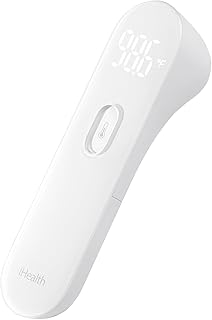Table of Contents
Fever After Waking Up From Nap
If you have ever woken up from a nap feeling feverish, you may be wondering what could be causing your symptoms.
In this article, we’ll explore some of the most common causes of post-nap fever and offer some tips on how to treat it.
What is fever after waking up from nap?
Fever after waking up from a nap is an increase in body temperature over the normal range of 98.6°F. This can be caused by a variety of illnesses and infections, such as a viral or bacterial infection, immunization, or even teething or tooth pain.
It is important to monitor a child’s temperature if they wake up from a nap with a fever, as it can be a sign of an underlying health issue. In most cases, it is best to not wake a child up to take their temperature or give them fever medicine; instead, allowing them to get a good night’s sleep is more beneficial for their healing process. However, if their symptoms are severe, it is important to contact a doctor.
What are the causes of fever after waking up from nap?
The causes of fever after waking up from a nap can vary. Common causes include viral or bacterial infections, immunization, overdressing, bundling, and running a heater on in the bedroom. Fevers can be caused by a number of different things, so it’s important to consult your doctor if your child’s fever persists.
It can also be caused by an uncomfortable sleep environment, such as a room that is too hot or too cold, light seeping in, distractions, or heavy or light bedding.
We collected the harmless causes:
Lack of movement during sleep
Lack of movement can leave you over-insulated in your sleep. Being overtired can also lead to nap resistance, which can cause a lack of movement during sleep.
Mild overheating by clothing
When a person become too warmly dressed in their clothing and/or blanket mild overheating can cause a fever after waking up from a nap.
Babies and young children are particularly susceptible to overheating due to their inability to regulate their body temperature as well as adults, and so should be monitored to ensure they do not become too warm. To prevent overheating, it’s important to dress your child lightly at night, keep the room temperature comfortable (between 70 and 74 degrees Farenheit), and make sure your child drinks plenty of fluids.
Mild overheating by a weighted blanket
Some people tend to get feverish when they use blankets for extended periods of time even night sweating occurs. This is because their bodies cannot maintain the increased core temperatures for long periods and respond with fever symptoms such as chills, headaches, elevated heart rate, and shortness of breath.
To prevent this, it is important to dress lightly at night, choose the appropriate blanket weight which is not too heavy, and keep the room temperature between 70 and 74 degrees Fahrenheit (18 and 22 degrees Celsius).
Use the Corala Weighted Blanket Calculator which follows best practices for choosing the right weight for a weighted blanket.
There are some benefits of sleeping without blankets, and one of them is overheating is non-existent!

Hyperhydrosis, when you sweat in your sleep
Hyperhydrosis is a common and harmless condition where a person sweats excessively, often in their sleep. It is caused by an overactive sympathetic nervous system, which is responsible for the body’s “fight or flight” response.
This can cause the body to become overheated, resulting in a fever after waking up from a nap. Heat exposure during the day, in combination with the body’s inability to cool itself down while asleep, can both contribute to this fever.
Hyperhydrosis can also be a symptom of a more serious underlying condition, such as an infection, in which case other symptoms may be present.
Cortisol, stress hormones are released
Cortisol, also known as the stress hormone, is released after being woken up from a nap due to a physiological response to the disruption of sleep. When the body is awakened abruptly, the hypothalamus sends a signal to the pituitary gland, which in turn signals the adrenal glands to release cortisol. This hormone is released in order to help the body cope with the stress of being awoken.
In addition, this release of cortisol can also trigger the body’s fight or flight response. This can lead to an increased heart rate and breathing, as well as increased blood pressure and muscle tension.
Sleep inertia
When you feel sick in the morning it is called sleep inertia which is a state of grogginess and disorientation. It is caused by the body’s natural response to the sudden interruption of sleep, which is to enter a state of confusion and disorientation. It does not involve real fever you just feel like youe are feverish.
Taking temperature after nap
Taking a temperature after a nap can be helpful in determining whether your toddler has a fever. If their temperature is above 40 degrees Celsius, it could be an indication that they are unwell and fighting off an infection.
This can help parents to know if they should take their child to a medical professional or if they should just let them sleep and rest more than usual. In addition, giving a nighttime dose of fever-reducing medication may help them to rest more easily and help their body to heal.
Can Sleeping with the Door Closed Cause a Fever After Waking Up from a Nap?
Many people wonder about the psychology of sleep with open door. However, it is unlikely that sleeping with the door closed can cause a fever after waking up from a nap. Fevers are typically caused by infections or other medical conditions, not by the simple act of keeping a door closed.
What are the symptoms of fever after waking up from nap?
What are the symptoms of fever after waking up from nap are muscle shakiness, muscle aches, tiredness, profuse sweating, refusal to eat, loss of appetite, lethargy, general weakness, confusion, dehydration.
FAQs
What is the best way to treat a fever after waking up from a nap?
The best way to treat a fever after waking up from a nap is to first check if your child is comfortable. If they are not, you can try to ease the symptoms with a few simple steps. First, dress your child in lightweight clothing and cover with a light sheet or blanket. Make sure your child’s bedroom is a comfortable temperature, not too hot or too cold. Offer plenty of fluids such as water, soup, ice pops, or flavored gelatin to avoid dehydration.
What is the best way to take a child’s temperature after a nap?
The best way to take a child’s temperature after a nap is to wait 15 minutes after they have eaten or drank. Then turn the thermometer on, place the tip under one side of their tongue towards the back, and have them keep their lips closed. Read the temperature when you hear the “beep”.
Alternatively, you can turn the thermometer on, place it in the center of their forehead and gently sweep the thermometer across their forehead stopping at their hairline. Quickly touch the thermometer to the back of their neck near the ear lobe, remove it from the child and read the temperature.
- 7 Grounding Exercises for Better Sleep Tonight - January 17, 2024
- What Are Grounding's Sleep Benefits? - January 17, 2024
- Maximize Sleep Quality With Seasonal Grounding Strategies - January 17, 2024








